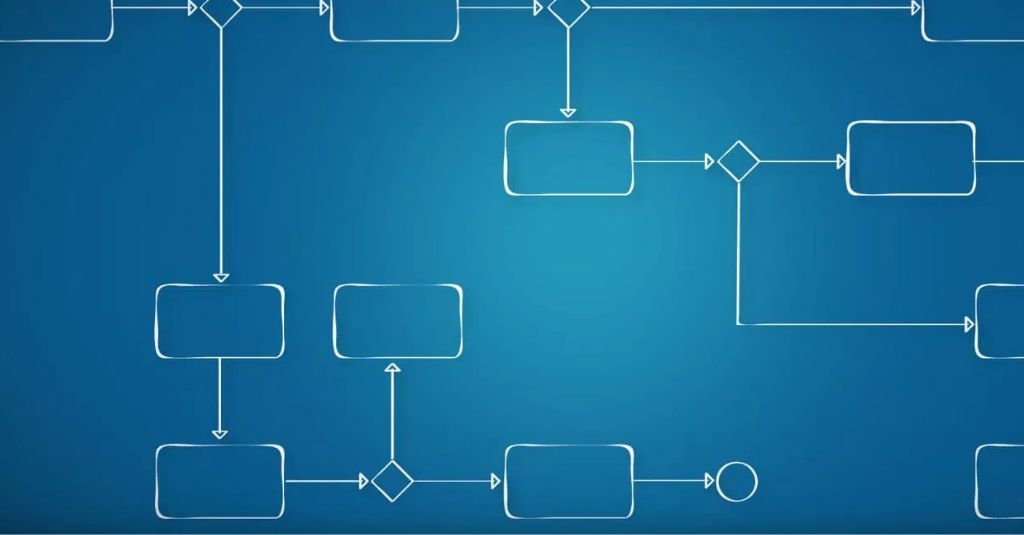Business processes are very important to the functioning of companies. They allow teams to easily understand and perform tasks, creating consistency in results and quality. Furthermore, it allows team members to identify and suggest improvements, helping the company grow and become more effective.
Let’s talk a little bit about capturing your processes and the methods you can use to do it.
It doesn’t have to be daunting
Save time and energy by understanding what it is you are trying to capture. Start by defining the name, the purpose, the description and the boundaries of the process. You need to be clear in what the process does, where it begins and where it ends. That means you’ll save time by not stressing about other things that might be related to the process but are not a part of it.
Create a plan of action before you begin. Having a plan will save time and make it less stressful. Make sure you have a timeframe (and do your best to stick to it), a list of team members that might participate and how they will participate, the method for storing and accessing the information needed, a way to test the process.
Stay organized. Once you’ve come up with a plan, try and stick to it as best as possible. Write things down! Documenting what you are doing is super helpful when something goes wrong. Rather than trying to guess what happened, you can look back and find the mistake. Plus, you can use this information to create a process for capturing processes! Which will make it way easier for the next times you do it!
Since I know capturing processes can be a little daunting, I am offering a NEW product called Easy Process Capture to help you with it. This is a personalized service to assist you on capturing your processes while automatically documenting it so that when you hire someone or when you delegate the task to someone on your team it can be completed the way that you want it to be.
Begin by walking through the steps
What systems do you need in order to complete the process? List the systems that will be involved. Map out how the information and tasks flow between those systems. Sometimes it might go more than once through one of the systems, you want to make sure you have that clear before you start, so you don’t skip any steps.
What information do you need? Where is it stored? Who and how they get access to this information? The process has to be clear and easy to follow. One problem that can really mess up the function of a process is when it needs a piece of information that isn’t there, and not stating how to get it.
Who owns the tasks within the process? How many people are involved in completing the process? Assigning the tasks properly is important for a good workflow and to avoid confusion. Even with steps described perfectly, if the process doesn’t state clearly who does what, you might end up with some tasks being done more than once and others not done at all.
How does the communication flow between the people? That is of utmost importance, communication is key! If the team members aren’t on the same page and aware of how the process is occurring the chances of mistakes happening are great.
Ways to capture your processes
There are a couple of different ways you can document your processes. And there’s also different software platforms you can use! Which ones you choose is really up to the message you are trying to convey, your style and personal preferences of both you and the people you’ll be sending the message to.
As I mentioned before, I offer a service for capturing processes. The great thing about Easy Process Capture is that it’s a “done with you” type of service. Meaning it can be adjusted to your unique needs!
You can test a couple of different solutions and see what works best for you and your team. Ask your team what they think and analyze the results to see which methods work best! When choosing your options consider WHAT you are capturing, WHO will be using it, WHERE they’ll be using it and HOW will they get access to it.
- Video
Videos are very rich tools for transmitting information since it allows for visual, audio and written content. You can record explanations or the process itself. Zoom is an awesome software that allows you to record videos, webinars, host meetings and chats in HD quality. Zoom now also includes transcribing of your cloud recorded meetings.
- Screen recording
Screen recording can be a great asset to capture tasks on softwire. It allows you to document the step by step of each task in a clear and organized way. Loom lets you capture your screen, voice, and face and instantly share your video in less time than it would take to type an email.
- Audio recording
In some cases, the visual aspect might not be as important and you just want an audio recording explaining the process. Otter.ai allows you to record and review in real-time. Search, play, edit, organize and share your conversations from any device.
- Text and images
Text is still probably one of the most used ways to convey information. And it can be great. Written information allows for quick scans and makes it easy to go back and quickly check little pieces of information that might have slipped on the first read. On top of that, adding a couple of images can make the material richer, more engaging and easier to follow. Clickup, Google Docs or even a Word Doc can be used for creating written documents like this.
- Workflow diagram
Workflow diagrams have been traditionally used on companies for capturing processes. This can be a great method because it gives a nice picture of the process that can be easily understood. However, you got to take care. Some of those diagrams can end up being huge and complicated, which makes then confusing. For a process that is too long or has too many exceptions, this might not be the best idea. Mind Meister is an online mind mapping tool that lets you capture, develop and share ideas visually.
- Interview
Depending on what type of process you are capturing, interviewing someone specialized might be a good option. For example, it might be beneficial for capturing creative processes. Zoom can also be used here.
- Checklist
Checklists can be used when coupled with other methods. They are great for following while completing the process and making sure no steps are skipped. Google Docs and Word Docs do that really well just like any other text document. Clickup has the advantage of letting tasks be assigned to different team members and checked off as they are completed. That makes it great for, not only documenting processes, but also sharing the progress between team members.
Less is more
Don’t try to over complicate things. When someone is trying to complete a process having too much information can be just as bad as not having enough. A process that is too complex and entangled by exceptions and little details is harder to understand at a glance and leaves more space for mistakes. Of course, information about those details and exceptions need to be made available but maybe it doesn’t need to be on your main process. Keep it simple, clean and clear. So your team members don’t get overwhelmed and confused.
Simple instructions allow for creativity. Processes need to let people know what they are expected to do and give them the tools to do it. However, it doesn’t need to dictate exactly how to do things. Having too many details that aren’t that relevant might blend in details that are in fact relevant making theme easier to miss. You can allow your team members to add their own ways of completing processes as long as it doesn’t comprise your final results.
For example, let’s say you are writing a process for baking a cake. Rather than saying “pour the milk with your right hand while using your left hand to stir the ingredients together”, you can just say “Pour the milk while stirring”. You conveyed the message but the person can do it more freely and is less likely of letting the really important details slip away. Which hands they used won’t affect the final result.
Use action words. Using clear and easy language is very important. Keep each activity short but meaningful, around 6-8 words, avoiding vague language. This helps users immediately understand what they need to do.
Testing the process
Ask someone who is unfamiliar with the process to try it out. If the process was well-captured anyone should be able to follow the steps and get the results with the expected quality. If any step isn’t clear enough or something goes wrong to try to find where the process wasn’t clear enough. Use this person’s feedback to improve the process. If you can get a family member or a friend to follow the process successfully, that means it works well and you can implement it on the company and rest assured you did a great job.
Be open to questions and comments. Not everything that is clear and obvious for one person will be for another. The goal of a process is to be clear for everyone but questions and comments are likely to arise. That doesn’t mean the process isn’t good, but everything can always improve. Be open!
Revisit and revise regularly. When a process is being used regularly by a group of people there might be little changes along the way. Someone might suggest a better way of completing a step. A program might launch a new update that changes the appearance of the software slighted. Revisiting and revising your processes is important to keep them updated and functional guaranteeing your final results remain consistent.
Need help capturing your processes? Want to know more about Easy Process Capture? Let’s Chat!
*** Some of the links to the services on this page contain affiliate links which will provide me with compensation if you choose to purchase their services ***


